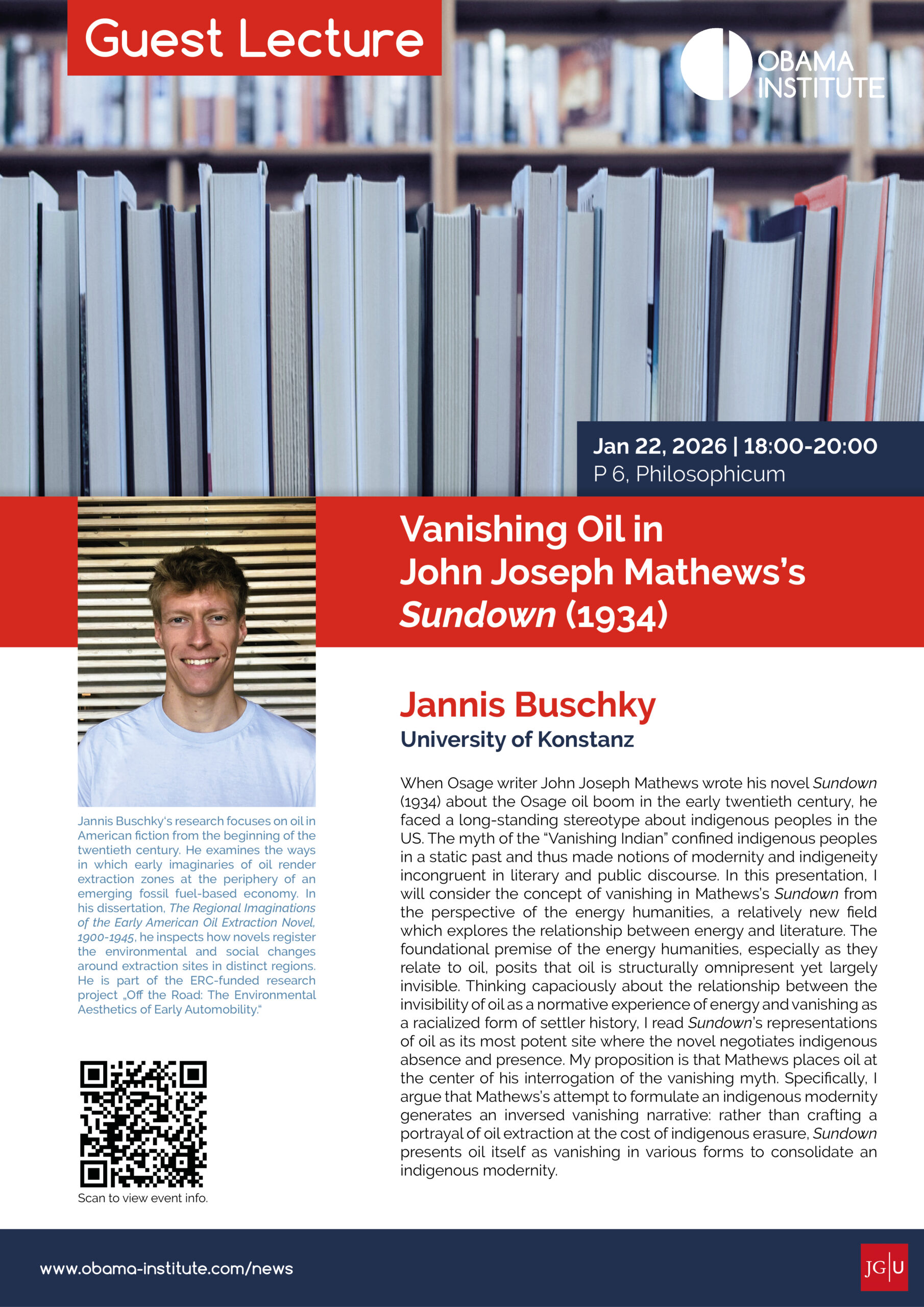Guest Lecture by Jannis Buschky, M.A. (University of Konstanz)
Vanishing Oil in John Joseph Mathews’s Sundown (1934)
January 22, 2026, 6-8pm, P 6 (Philosophicum)
When Osage writer John Joseph Mathews wrote his novel Sundown (1934) about the Osage oil boom in the early twentieth century, he faced a long-standing stereotype about indigenous peoples in the US. The myth of the “Vanishing Indian” confined indigenous peoples in a static past and thus made notions of modernity and indigeneity incongruent in literary and public discourse. In this presentation, I will consider the concept of vanishing in Mathews’s Sundown from the perspective of the energy humanities, a relatively new field which explores the relationship between energy and literature. The foundational premise of the energy humanities, especially as they relate to oil, posits that oil is structurally omnipresent yet largely invisible. Thinking capaciously about the relationship between the invisibility of oil as a normative experience of energy and vanishing as a racialized form of settler history, I read Sundown’s representations of oil as its most potent site where the novel negotiates indigenous absence and presence. My proposition is that Mathews places oil at the center of his interrogation of the vanishing myth. Specifically, I argue that Mathews’s attempt to formulate an indigenous modernity generates an inversed vanishing narrative: rather than crafting a portrayal of oil extraction at the cost of indigenous erasure, Sundown presents oil itself as vanishing in various forms to consolidate an indigenous modernity.
Jannis Buschky’s research focuses on oil in American fiction from the beginning of the twentieth century. He examines the ways in which early imaginaries of oil render extraction zones at the periphery of an emerging fossil fuel-based economy. In his dissertation, The Regional Imaginations of the Early American Oil Extraction Novel, 1900-1945, he inspects how novels register the environmental and social changes around extraction sites in distinct regions. He is part of the ERC-funded research project “Off the Road: The Environmental Aesthetics of Early Automobility.”
You can download the poster for the event here.


